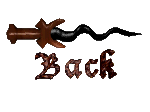|
Drow
trust no other creatures, including (or especially) other drow. The relations
of such a paranoid race with others is uneasy, to say the least.
Possible equals
(the drow admit to no race as their superior) such as illithids and duergar
are dealt with by a mixture of armed truces, hard bargaining, subtle threats,
magic, and mutual-gain pacts. Only exceptional drow individuals come to
trust another being fully (and live
to tell the tale!) in the cities of
Lolth-worshippers. Trusting drow are more common among the worshippers
of Eillistraee, but even theirs is hard to gain.
The drow are the most widespread and
powerful of the known Underdark cultures. Strife among themselves, and
a lust for a personal power and commercial gain, always prevents drow from
gathering in any concerted effort against foes. This is probably the only
thing that keeps many kuo-toa, jermlaine, and disir communities intact;
the drow could easily wipe out
weaker neighbors if they took up arms
in earnest.
Oddly enough,
rule over all the subterranean races (even to the powerful mind flayers
and aboleth) is the ultimate goal of drow - “the First Part of the Destiny
of the People,” as priests of Lloth put it. The Second Part is the extermination
of all other elven races, including the seizing of
surface lands and holdings. Lloth and
her clergy do not, however, advocate any sort of “holy war”. Lolth sees
her People best served by the competitive striving of individuals, cabals
and factions among drow society and her priesthood, and by the efforts
of individual drow communities. In this way, the race grows stronger without
breeding in decadence, weakness, and laziness.
Drow even practice
cannibalism when their numbers grow too great for a given hold or community.
Only the aged are used as food, as the survival of the young is seen as
the future of the People. Population pressures like this result because
sending out expeditions to found new holds is thought too likely to provoke
war with powerful neighbors.
Plans to further
drow rule and influence are supported with the greatest enthusiasm by drow
whose present social position is good, if they are not threatened by the
plan. Drow of low class are most likely to support plans that involve open
warfare, or strife among drow.
If drow are treacherous among themselves,
they are even more so in their dealings with others. Drow will readily
“negotiate” with other races over matters of boundaries, trade, and peace.
They will break any such agreements and treaties the moment that terms
no longer seem advantageous (bargains with “lesser races” are not considered
binding). Most races have
learned to be cautious and alert when
dealing with drow, and to have several the treachery when - not if - it
comes.
Above all others,
deep gnomes hate the drow. Conversely, in all the Underdark, there is no
creature the dark elf enjoys slaying more than a svirfneblin. Other traditional
drow foes include dwarves, humans, and other elves of all sorts. Duergar,
illithids, and lesser races of the Underdark are traded with, but never
trusted or befriended, except by the most worldly and
experienced drow merchants.
This is not to say that drow are an
unruly, unpredictable mob of violent berserkers, engaged in a sort of endless
civil war. (Actually, a more apt description to some would be that they
are a decadent, status-obsessed nest of vipers engaged in an endless controlled
civil war.) They strive always for personal ascendancy, yes, but their
striving is governed by rules and
group-loyalties.
Even if freed from the authority of
an established House, ruler, or realm, drow instinctively band together
in groups. Survival, to these warlike folk (so often at sword’s point among
themselves) is often a matter of numbers, trusted battle-companions, and
tactics.
|






